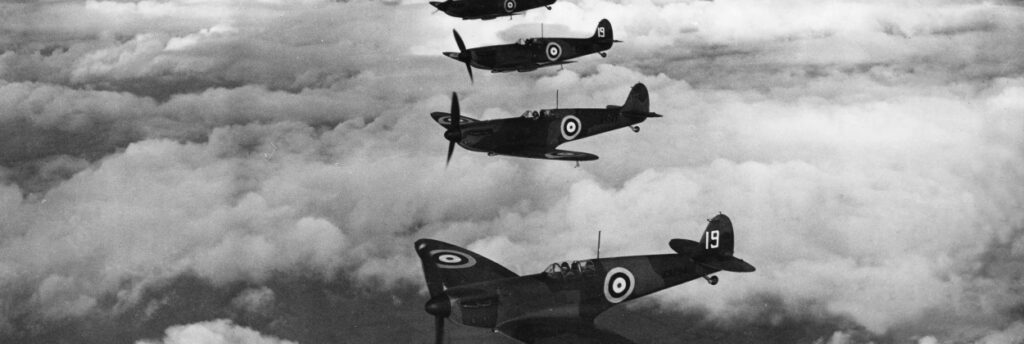Warplanes play an essential role in warfare. Having an advantage in the air may change the course of the battle. The Spitfire was a front-line fighter during World War II. But did you know that the machine guns loaded onto these planes didn’t perform accurately as depicted in the movies?
Most film representations of World War II Spitfires are completely wrong since they only had roughly 20 seconds of gun time before they ran out of ammunition.
What is the Spitfire?
Squadron Leader Ralph Sorley’s contribution to the Spitfire’s armament is widely overlooked. The original specification called for four 0.303-caliber guns would have been woefully inadequate given the nature of combat. But Sorley, who had served in the Royal Navy during WWI, was the right man in the right place at the right time. Working in the operational requirements office, he proposed increasing the latest fighter’s armament to eight machine guns as it was eight 0.30 calibers proved ineffective against bombers.
The throw weight of the British and German fighters’ armament favored the latter in anachronistic terms. A three-second burst of eight 0.303s produced 13 pounds of projectiles downrange, whereas the combined cannon or MG battery of the 109 produced 18 pounds. However, fewer than 10% of all rounds fired hit a target, explaining why so few pilots became aces. Six Spitfires fired 7,000 rounds at a Do 17 without obliterating it in one eye-opening episode.
At 100 yards, Sorley suggested sighting the eight machine guns into a ten-foot circle. That was a promising approach for an average pilot, but later, Fighter Command adapted a 400-yard convergence beyond most pilots’ abilities, dispersing the pattern. Pilots could make their arrangements in some squadrons, but their familiarity vanished if they had to fly another aircraft. With 300 rounds per gun, the pilot had about 20 seconds to pull the trigger.
Spitfire IIB models arrived in the middle of the battle with two 20mm machine guns instead of four. The new mark, with 60 rounds per cannon, was more lethal against bombers. Still, the Hispano-Suiza design was unreliable, especially under G. After the Battle, when the mixed armament became standard for Spitfires, modifications only improved performance. Later models’ bumps on the wing accommodated a motor to enhance feeding.
The RAF used a variety of ammunition to find the best combination to destroy enemy aircraft. Ball, armor-piercing, and tracer rounds were commonly used in succession, but incendiary rounds were also developed. Britain produced the Buckingham series during World War I, initially intended to ignite Zeppelins. The RAF successfully modified a more effective round from Belgium, the De Wilde.
Mixed armament posed an unavoidable problem. The.303 and 20mm had different muzzle velocities and ballistic properties. As a result, they could only be harmonized for a limited range, and the cannon’s trajectory fell off fairly quickly. As is always the case in air combat, the closer a pilot can get to his target, the better. (Source: Flight Journal)
Fun Facts About the Spitfire
The Spitfire was the primary front-line fighter during WWII. It was so good that it was used after the war for decades.
Short-range, high-speed attacks on other planes or bases were carried out by the Spitfire. Because of its eight Browning machine guns, it was primarily used in dogfights.
The plane’s engines, which are either Rolls Royce Merlins or Griffons, allow it to reach top speeds of 606 miles per hour.
Due to the shape of the spitfire’s wings, it could outrun most planes, including the Hurricane. (Source: Fun Kids Live)
Image from Aerotime.aero
